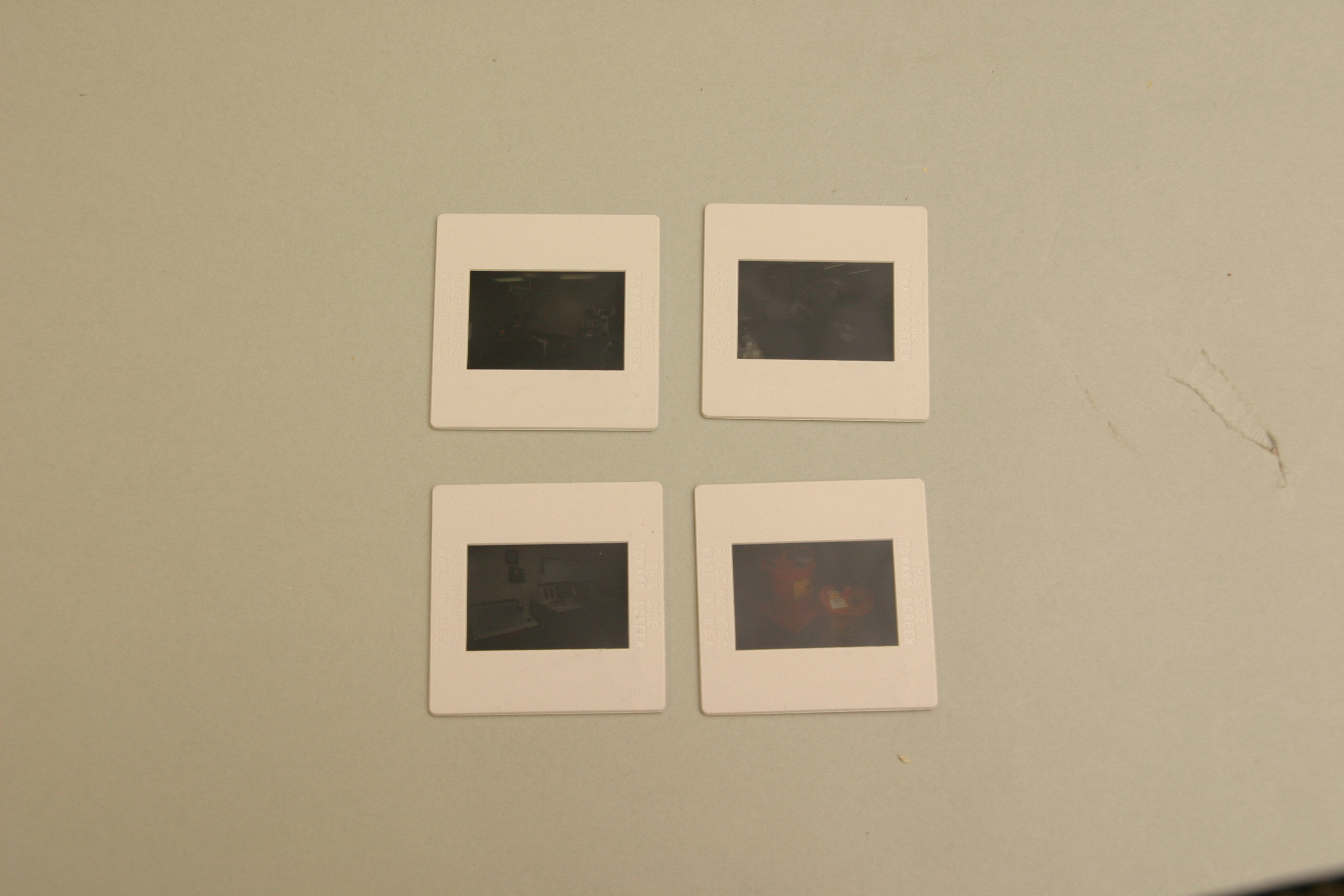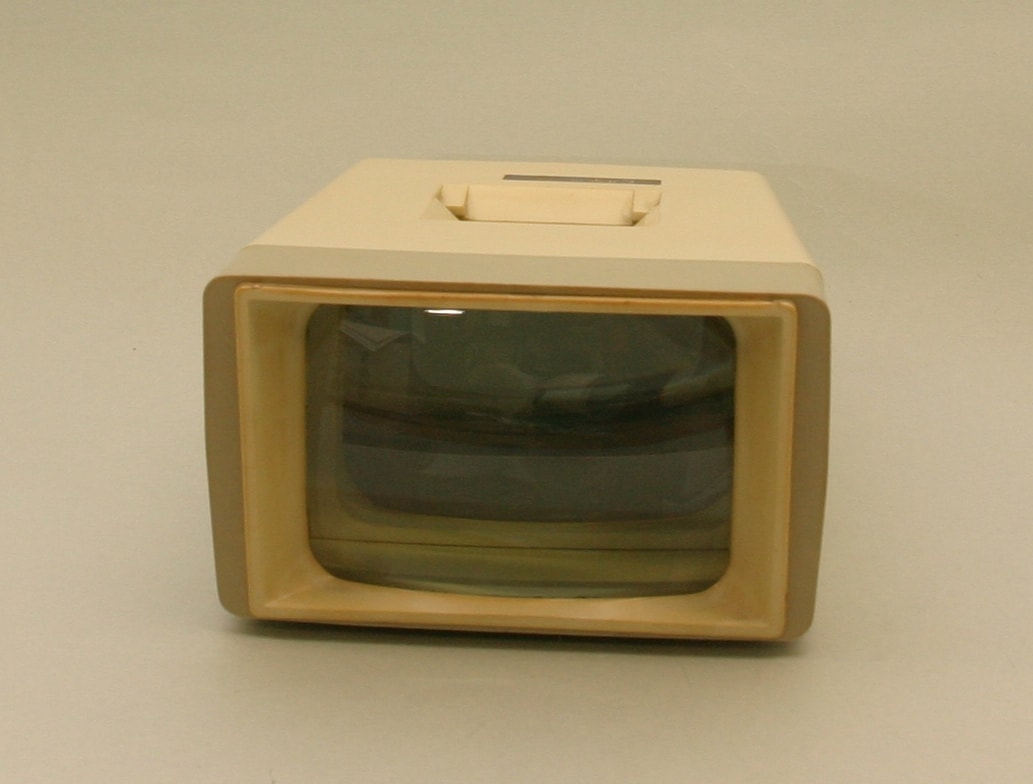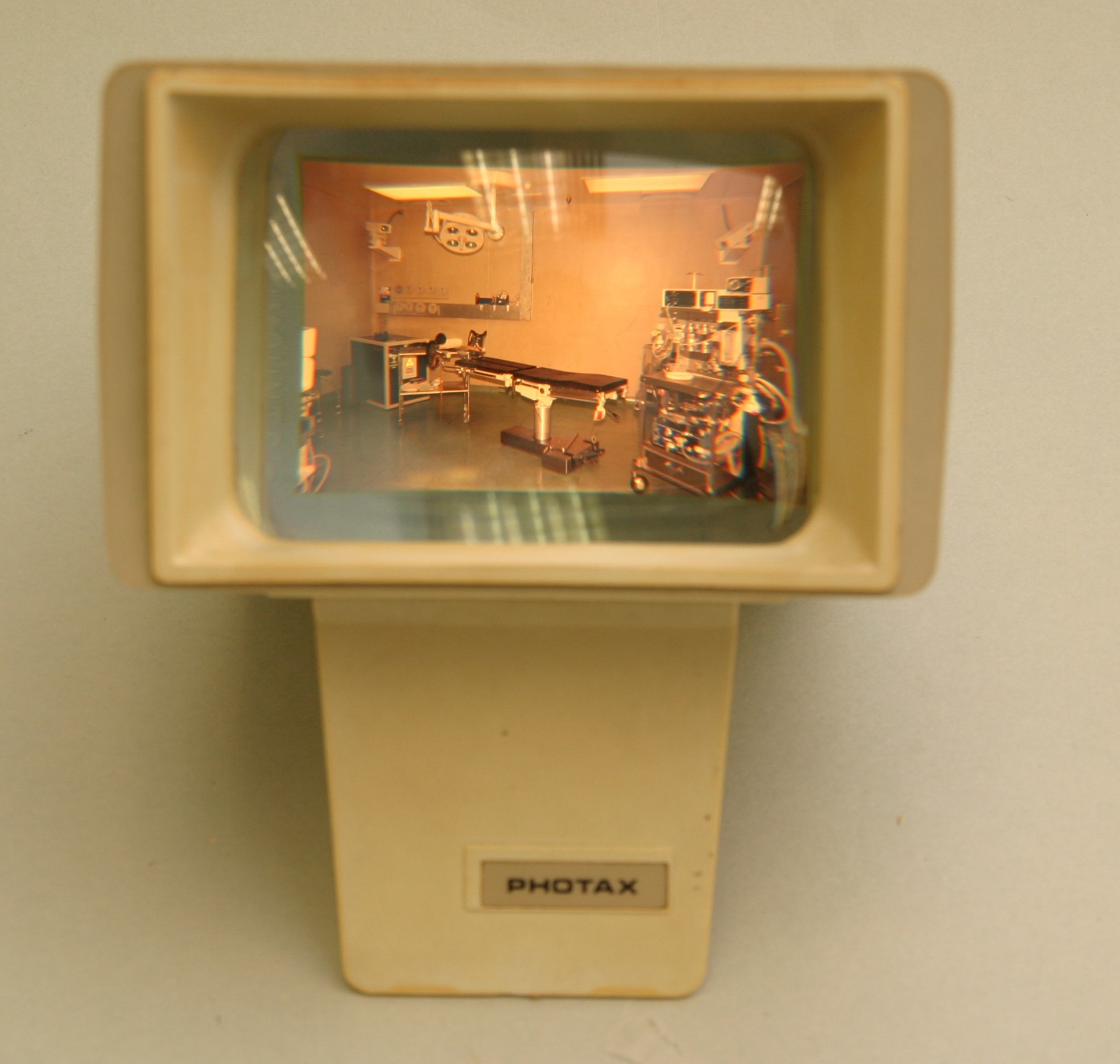Photographic slide is a type of film that produces a positive image on a transparent base. The film is processed to produce transparencies (abbreviated as "diafilm" in many countries) instead of negatives and prints.
Photographic slide is a specially mounted individual transparency intended for projection onto a screen using a slide projector. This allows the photograph to be viewed by a large audience at once. The most common form is the 35 mm slide, with the image framed in a 2×2 inch cardboard or plastic mount. Some specialized labs produce photographic slides from digital camera images in formats such as JPEG, from computer-generated presentation graphics, and from a wide variety of physical source material such as fingerprints, microscopic sections, paper documents, astronomical images, etc.

Slide magnifier is an opto-mechanical device for showing photographic slides. The magnifier displayed a single slide to a viewer. When the slide is inserted into the top, a switch triggers a backlight, revealing the slide's details.
A projector has four main elements: electric incandescent light bulb or other light source (usually fan-cooled), reflector and "condensing" lens to direct the light to the slide, slide holder and focusing lens.
A flat piece of heat-absorbing glass is often placed in the light path between the condensing lens and the slide, to avoid damaging the latter. This glass transmits visible wavelengths but absorbs infrared. Light passes through the transparent slide and lens, and the resulting image is enlarged and projected onto a perpendicular flat screen so the audience can view its reflection. Alternatively, the image may be projected onto a translucent "rear projection" screen, often used for continuous automatic display for close viewing. This form of projection also avoids the audience interrupting the light stream by casting their shadows on the projection or by bumping into the projector.



